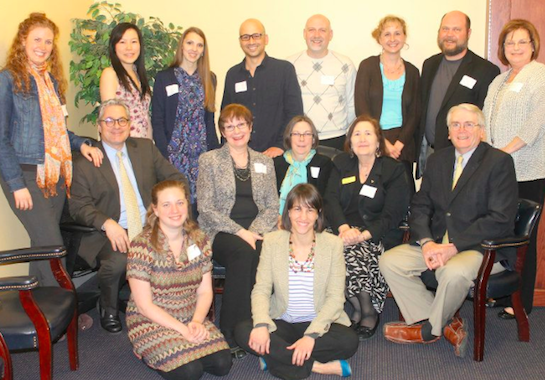“Creative Robotics” Research Project
The three-year project supported by a $1.5 million dollar National Science Foundation grant to the CREATE Lab of the Robotics Institute of Carnegie Mellon University. In addition to CMU, the participating partners include Allegheny Valley School District, Mingo County Schools and the colleges of education at Marshall University and West Liberty University.
Please read this article for more information.
Creative Learning Spaces Project
The Creative Learning Spaces Project is focused on the implementation of research-based design principles that promote collaboration, creativity, and twenty-first century learning in various educational environments. The project is bringing together a diverse group of partners in Pennsylvania and West Virginia to create eight indoor and outdoor spaces that will provide unique educational learning environments in Pre-K through higher education settings.
Project partners include the College of Education and the Center for Arts and Education at West Liberty University, Intermediate Unit 1, Carlow University , the Children’s Museum of Pittsburgh, the Children’s Museum of the Ohio Valley (CMOV), the Mattress Factory Museum, Shady Lane Preschool, the CREATE Lab at Carnegie Mellon University, Bentworth High School, Uniontown Area High School, Wheeling Middle School, Phipps Conservatory and Botanical Gardens and the Harless Center at Marshall University.
CREATE Satellite

The Center for Arts & Education is the second West Virginia partner of the CREATE Lab Satellite Network which engages educators and local communities in the development and dissemination of cutting edge technologies, and innovative approaches to learning and teaching.
The Satellite Network is a partnership of Carnegie Mellon University’s CREATE Lab with four schools of education (Marshall, West Liberty, Carlow and West Virginia Universities) and ASSET STEM Education. Supported by the Benedum Foundation, this unique network combines and coordinates the creative technology expertise at CREATE Lab with curriculum, professional development and logistical expertise, and local networks of satellite partners.
Outreach teams in the schools of education share CREATE Lab projects with teachers (both current and aspiring) in locally meaningful ways. This empowers the communities they serve to truly own and adapt these tools to meet their own needs. ASSET STEM Education provides support across the network. Integrating lessons learned locally, and on-the-ground experience from all locations into professional development to its member school districts and educators, ASSET amplifies the impact of the Satellite Network into an ever-broadening set of locations.
With funding from the Claude Worthington Benedum Foundation, the Children’s Museum of Pittsburgh has developed Mobile MAKESHOP, a program to create sustainable models for integrating open-ended, learning-rich making experiences into schools, libraries, and community centers. The Center for Arts and Education is one of five sites selected to participate in the pilot project during the 2013-2014 school year.
Teaching Artist Project